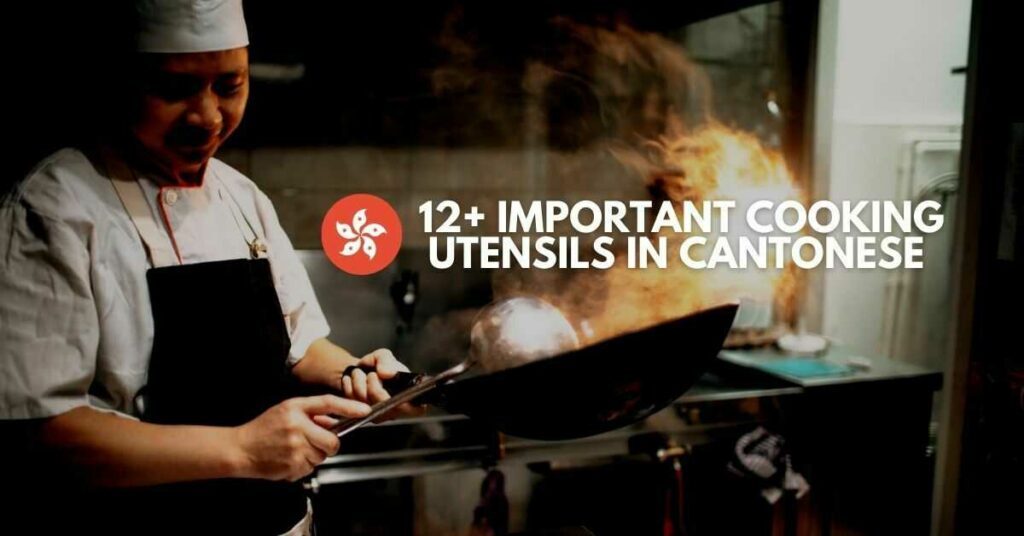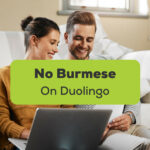Cantonese cuisine is one of the famous cuisines in the world today. So, why not learn these essential cooking utensils in the Cantonese language 炊具 ceoi1 geoi6 today? If you are up for that, then let the learning begin!
What’s your favorite Cantonese dish? People love trying to cook and learn more about their favorite meals. They search for the recipes and ways of cooking. Cantonese cuisine is indeed one of the all-time favorite cuisines that have been famous in different parts of the world. It has a variety of cooking ingredients and conventional cooking methods used to get the natural flavor of the food.
The cooking process and techniques would not be complete without the different cooking utensils and kitchenware used to cook food faster and easier. That is why it is essential to learn about cooking utensils in Cantonese.
As you go over this lesson, you will be guided by romanizations and English translations. Since Cantonese is also known as Traditional Chinese, it can be challenging for you to learn the words and phrases below, so translations and romanizations may be helpful.
Cantonese Cuisine
Before we discover the different cooking utensils in the Cantonese language, we must first learn the characteristics of Cantonese cuisine or authentic Chinese cooking.
Cantonese cuisine, or Yue cuisine, is Chinese cuisine that originated from the Guangdong province in Mainland China, Hong Kong, and Macau. Its flavors are mostly light and natural flavors. Since these places are located in the Pearl Delta River, the Cantonese Chinese recipes are rich in fresh ingredients making steaming is the primary cooking method. Other cooking methods are also used, such as stir-frying, deep-frying, roasting, braising, sautéing, boiling, and more.
Today, Cantonese cuisine is continuously making history. There are lots of Cantonese restaurants found in different countries. But, if you want an authentic Cantonese flavor and dining experience, there’s no other place to go than Hong Kong, Guangdong Province, and Macau.
Cantonese Food
Take a moment to think about your favorite Cantonese Chinese restaurants that you have been to. You’ll mostly see dishes such as lo mein, chop suey, wanton, fried rice, glutinous rice cakes, and more. The variety of ingredients, spices, sauces, and cooking methods is the reason behind every delicious Cantonese food we know today. Here are some of the all-time favorite Cantonese dishes:
Sweet And Sour Pork – 糖醋咕噜肉 (Tong4 Cou3 Gu1 Lou1 Juk6)
Sweet And Sour Pork is a Cantonese Chinese dish made up of pork, pineapple, onions, peppers, and sticky-sweet sauce.
Beef Chow Fun – 干炒牛河 (Gon1 Caau2 Ngau4 Ho4)
Beef chow fun is made comprised of beef stir-fried in hot oil, hor fun (wide rice noodles), and bean sprouts.
Lo mein – 撈麵 (Lou1 Min6)
Lo mein is a Cantonese cuisine that consists of egg noodles, veggies, and pork or shellfish of some sort. The meat used is usually beef, chicken, shrimp, or pork.
Wonton Noodles – 雲吞麵 (Wan4 Tan1 Min6)
Wonton noodles is a Cantonese meal comprised of egg noodles, vegetables, and wonton dumplings served in a hot broth.
Cooking Utensils In Cantonese Language
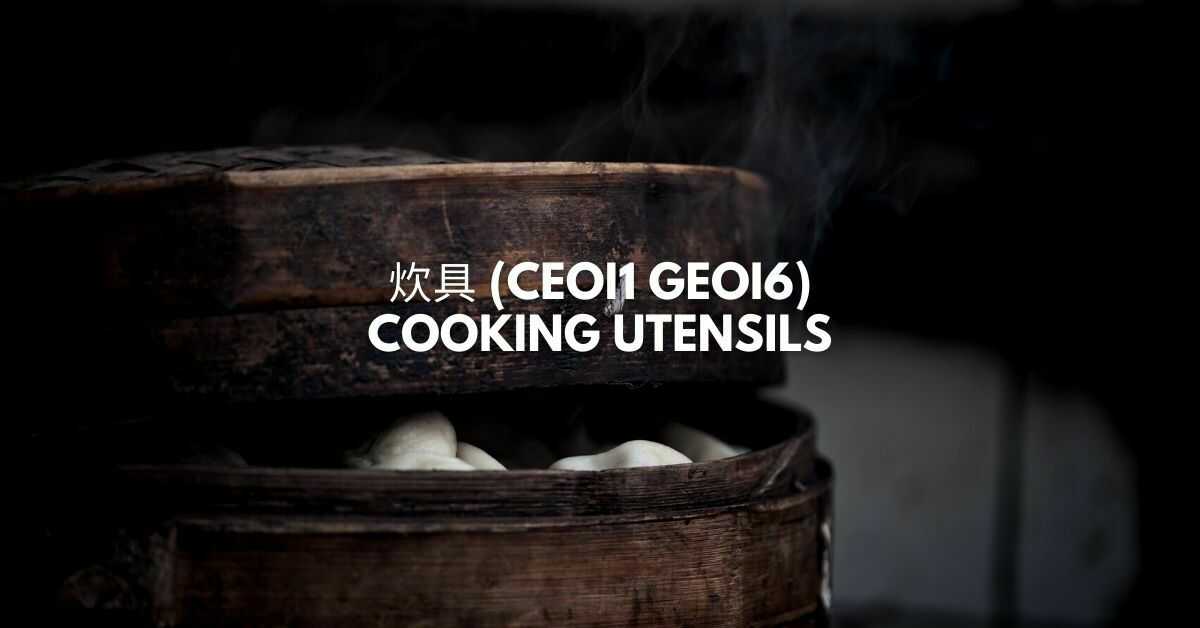
炊具 (Ceoi1 Geoi6)
Before we start learning about different cooking utensils in Cantonese, we should first learn that the Cantonese word for “cooking utensils.” In Cantonese, they use the word 炊具 (Ceoi1 Geoi6). If you ever encounter the word 器皿 Qìmǐn, do not be confused because it’s from the other Chinese language, which is the Mandarin. The latter is spoken mostly in mainland China while the others.
Behind the delicious Cantonese Chinese dishes are great Cantonese Chinese cooks. These cooks are very skilled in using different cooking utensils for cooking these dishes. There are different cooking utensils that are used for cooking other Cantonese dishes. So, let us learn the other cooking utensils in the Cantonese language:
鑊 (Wok6) – Wok

Let’s start with the most popular and most important cooking utensils that originated from China – the wok 鑊 (Wok6). It is a deep round-bottomed cooking pot. There are also flat bottomed wok t is used for cooking. Woks are used in almost all cooking methods like stir-frying, deep-frying, pan-frying, boiling, steaming, poaching, braising, stewing, searing, making soup, and more. When using a wok, do not forget the wok ring because it is essential when you are cooking.
菜刀 (Coi3 Dou1) – Cleaver

Cantonese dishes have different kinds of ingredients that make them tasty. So, cleaver 菜刀 (Coi3 Dou1) is also one of the essential vocabularies that you should learn about cooking utensils in Cantonese. Cleavers are used in mincing vegetables, cutting meats, and crushing gingers and garlic. It has a wooden, plastic, or stainless steel handle that is heavy and thick. Did you know that a Chinese cleaver is designed for chopping through bone?
砧板 (Zam1 Baan2) – Cutting Board / Chopping Board
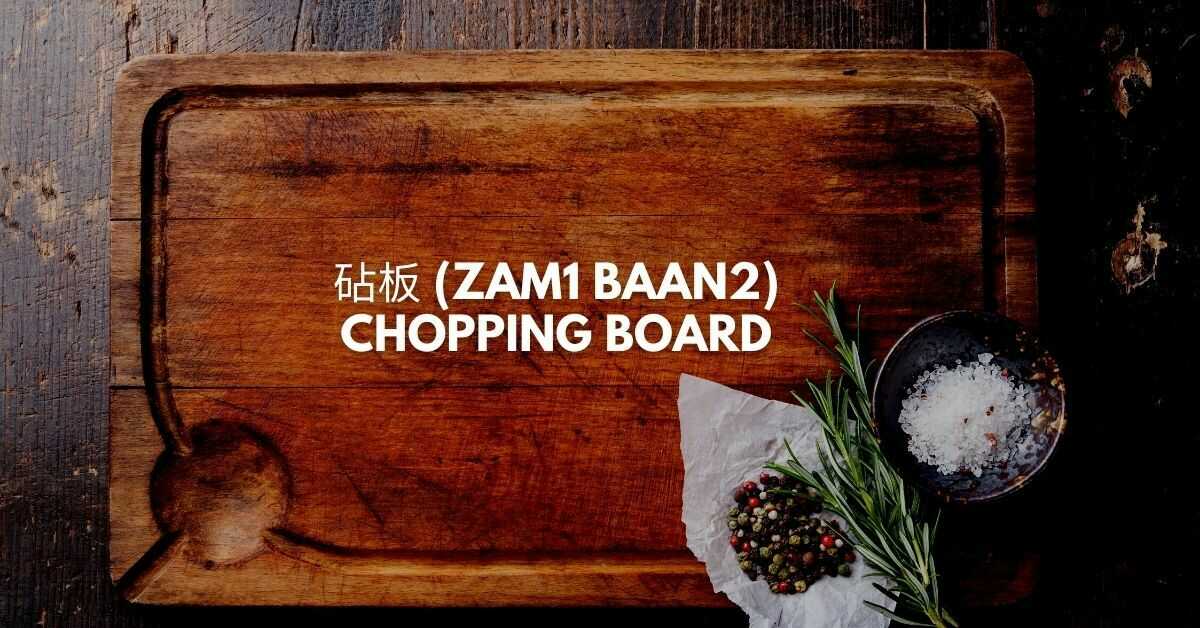
Another must-learn cooking utensils in Cantonese that you should learn are the Cutting Board 砧板 (Zam1 Baan2). Of course, the main purpose of the chopping board is to protect the worktop when cutting different ingredients and to easily push them into the wok or bowl. Although chefs and people mostly use wooden or acrylic cutting board, the one that is made with bamboo is also used.
筷子 (Faai3 Zi2) – Chopsticks
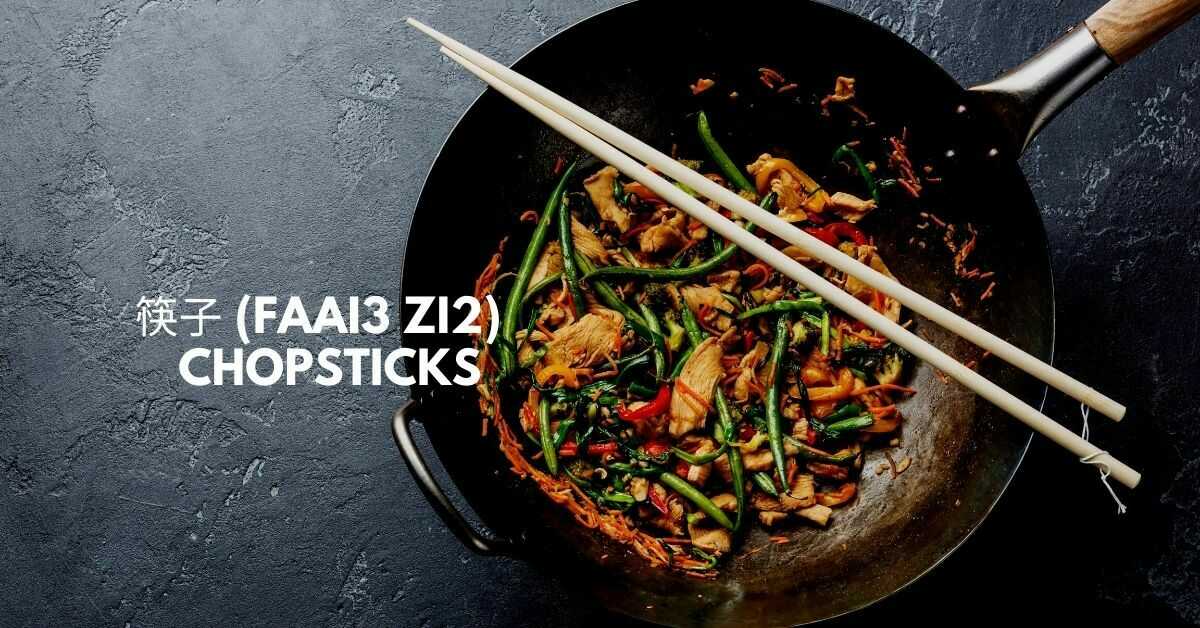
Of course, we cannot talk about cooking utensils in Cantonese without chopsticks 筷子 (Faai3 Zi2). In most of East Asia, they are sticks that have been utilized as kitchen and eating utensils. For eating, regular-sized chopsticks are used, but it is preferred to use long cooking chopsticks for cooking.
漏勺 (Lau6 Soek3) – Chinese Scoop Strainer
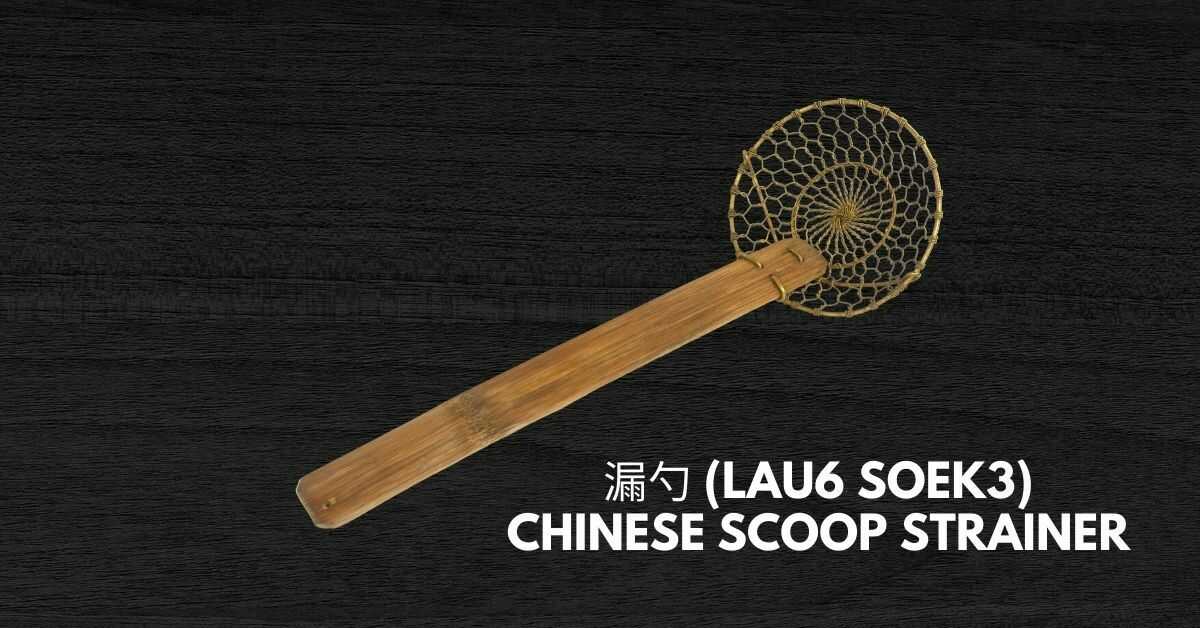
A strainer or a Chinese scoop strainer is a must-have in cooking Cantonese dishes, especially if you’re deep-frying, skimming, straining, and cooking with boiling water. It is used to lift fried foods from hot oils such as fried fish or to remove noodles, dumplings, and wontons from boiling water. The typical Chinese scoop strainer has a round head and is made of wire, stainless steel, metal, or a long bamboo handle.
湯殼 (Tong1 Hok3) – Ladle
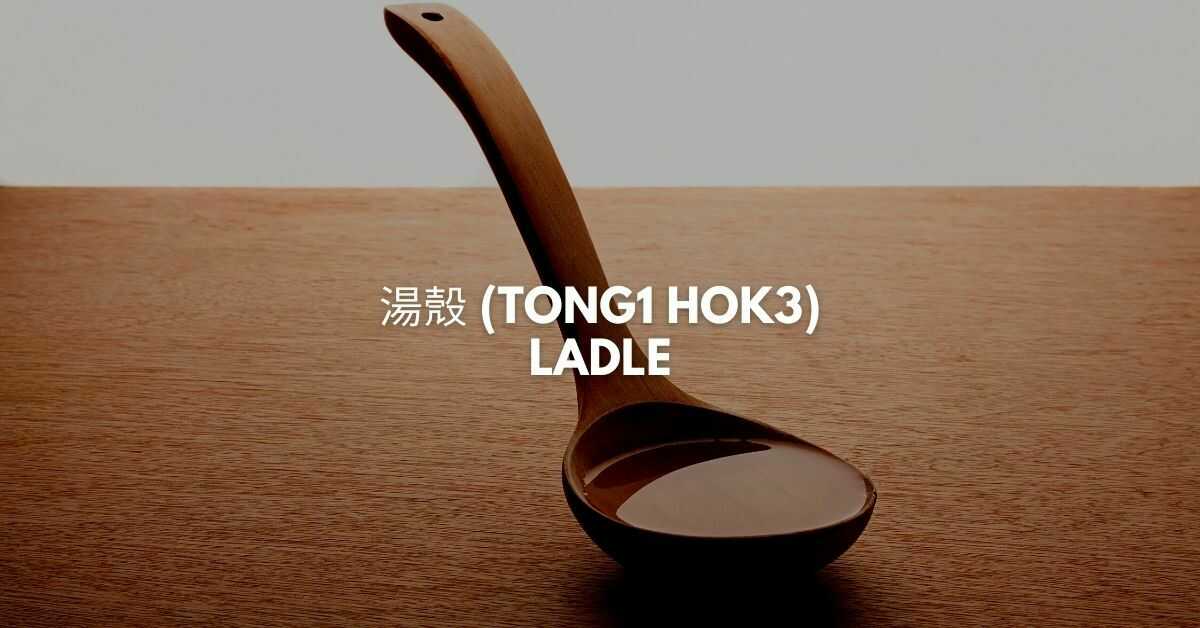
Ladles are also one of the most important cooking utensils. If you’re a fan of Cantonese soup dishes, you’ll really need a ladle. It is used in serving soup from a hot pot to a bowl. Ladles can be made into different materials like bamboo, wood, plastic, silver, and stainless steel.
锅铲 (Wo1 Caan2) – Wok Shovel
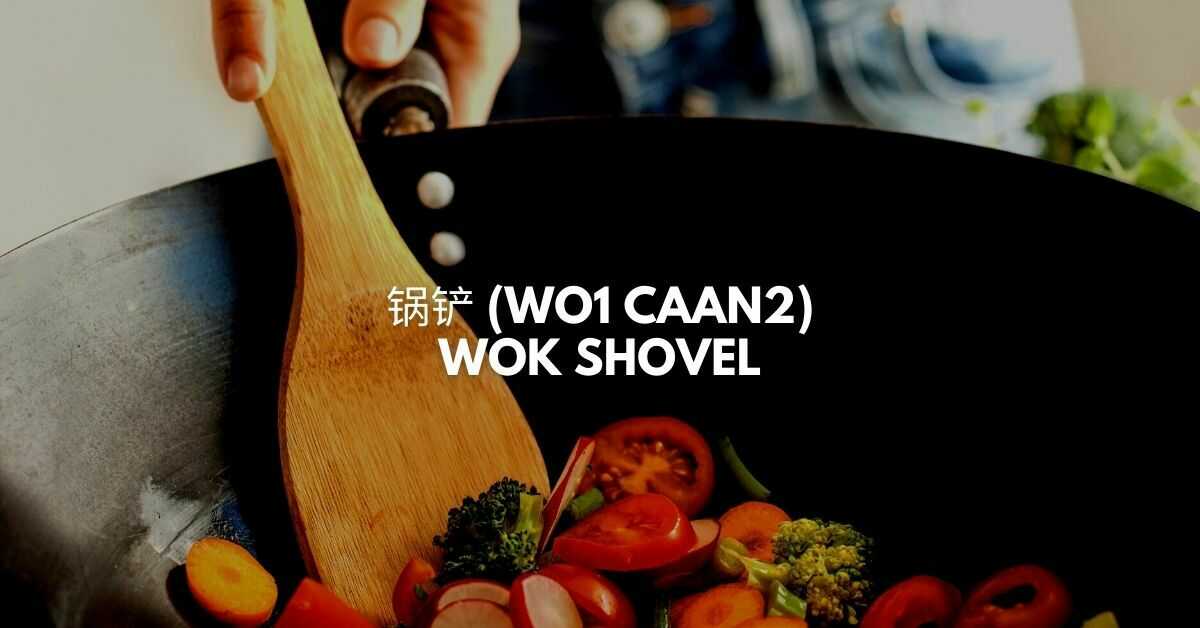
A wok is best used with a wok shovel 锅铲 (Wo1 Caan2). This cooking utensil is handy, especially in stir-frying and scooping. It’s more than just a spatula that is typically used in everyday cooking. The edge of the wok shovel is rounded to fit the curve of the wok so all the sauces and ingredients around the wok can be reached.
飯煲 (Faan6 Bou1) – Rice cooker
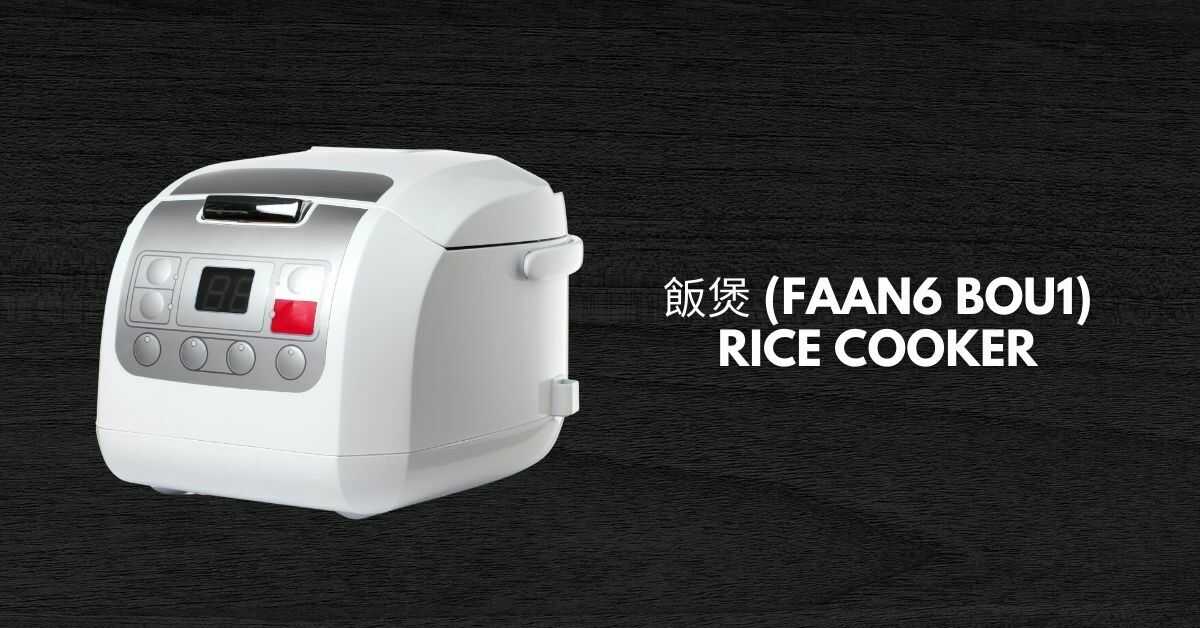
The place where Cantonese dishes originated is located near the Pearl Delta River. This place is good for growing crops, especially rice making as one of the staples of Cantonese people. So, in this modern time, rice cookers are really important. Rice cookers are electronic cooking utensil used to make cooking rice faster.
高壓煲 (Gou1 Aat3 Bou1) – Pressure Cooker / Pressure Pot
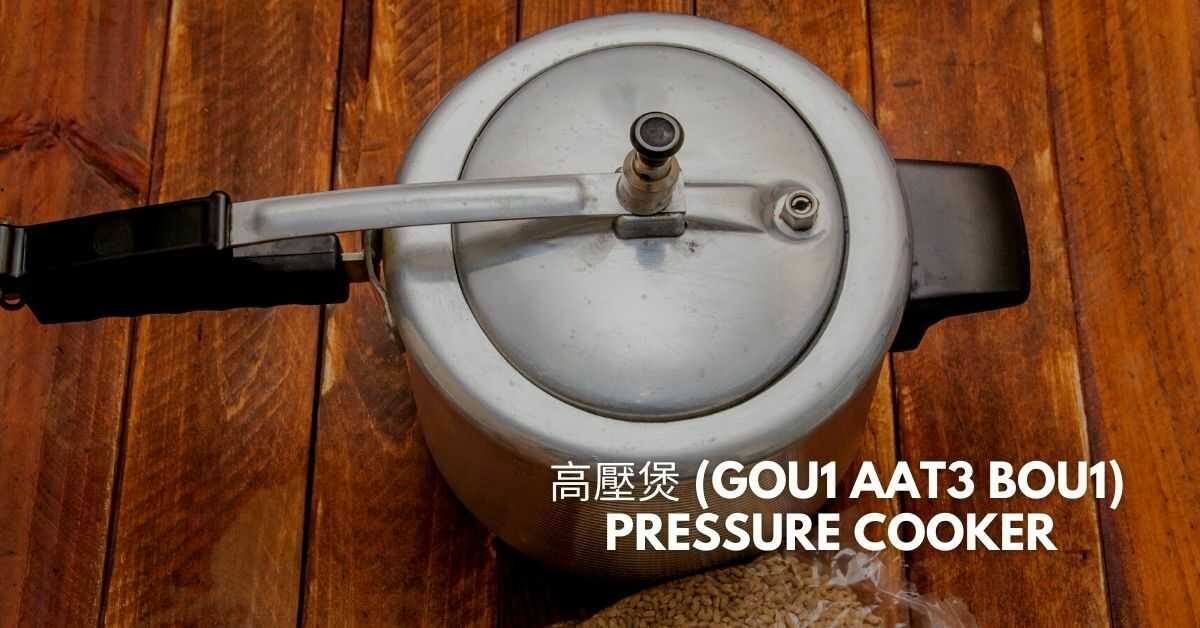
Pressure cookers are indeed one of the must learn cooking utensils in Cantonese. If you want to cook food and make the meat soft faster, a pressure cooker 高壓煲 (Gou1 Aat3 Bou1) is perfect for you. It works faster than the conventional cooking method. This can be used to cook your all-time favorite Cantonese dishes, such as spare ribs, stew, porridge, and more. In pressure, cookers use steam pressure created from boiling liquid.
蒸笼 (Zing1 Lung4) – Steamer /Steaming Baskets
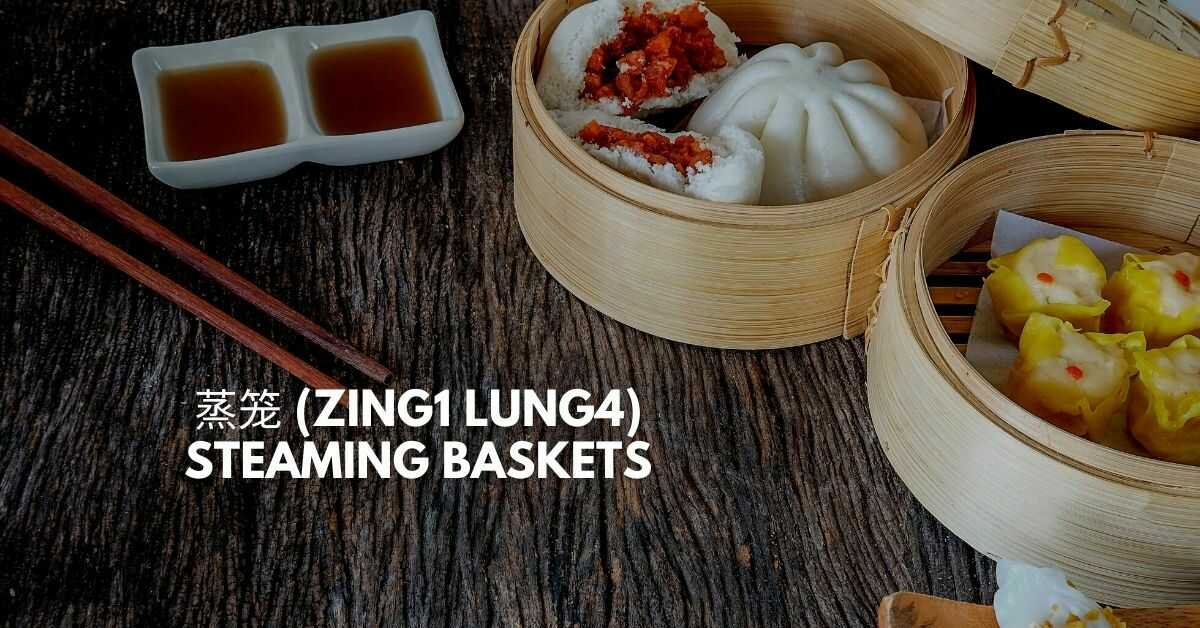
Remember how it’s mentioned above that steaming is the most preferred method of cooking? Well, this makes steamer baskets one of the essential cooking utensils in Cantonese cuisine. Mostly, you’ll see that Cantonese / Chinese chefs use a bamboo steamer. In an authentic Cantonese restaurant, this is the most famous steamer in 蒸笼 (Zing1 Lung4).
Dumplings, buns, fish, pancakes, vegetables, and meat are a few of the food that you can cook with a steaming basket. You will also be able to cook multiple dishes by stacking or layering them.
煲 (Bou1) – Pot
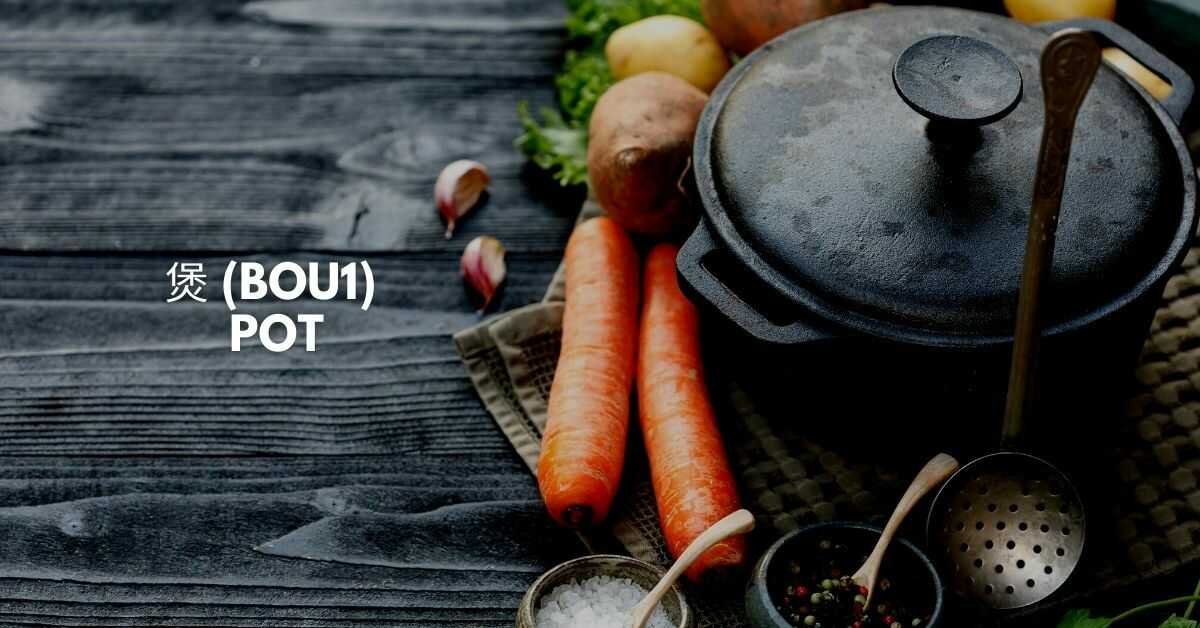
Another must-have cooking utensil is the pot. Pots 煲 (Bou1) are also used for cooking soups and stews like Cantonese seafood soup 海皇羹 (hoi2 wong4 gang1), Spare ribs soup with watercress and apricot kernels 南北杏西洋菜豬骨湯 (naam4 bak1 hang6 sai1 joeng4 coi3 zyu1 gwat1 tong1), and Stewed beef brisket 柱侯牛腩 ( cyu5 hau4 ngau4 naam5).
煲仔 (Bou1 Zai2) – Clay Pot
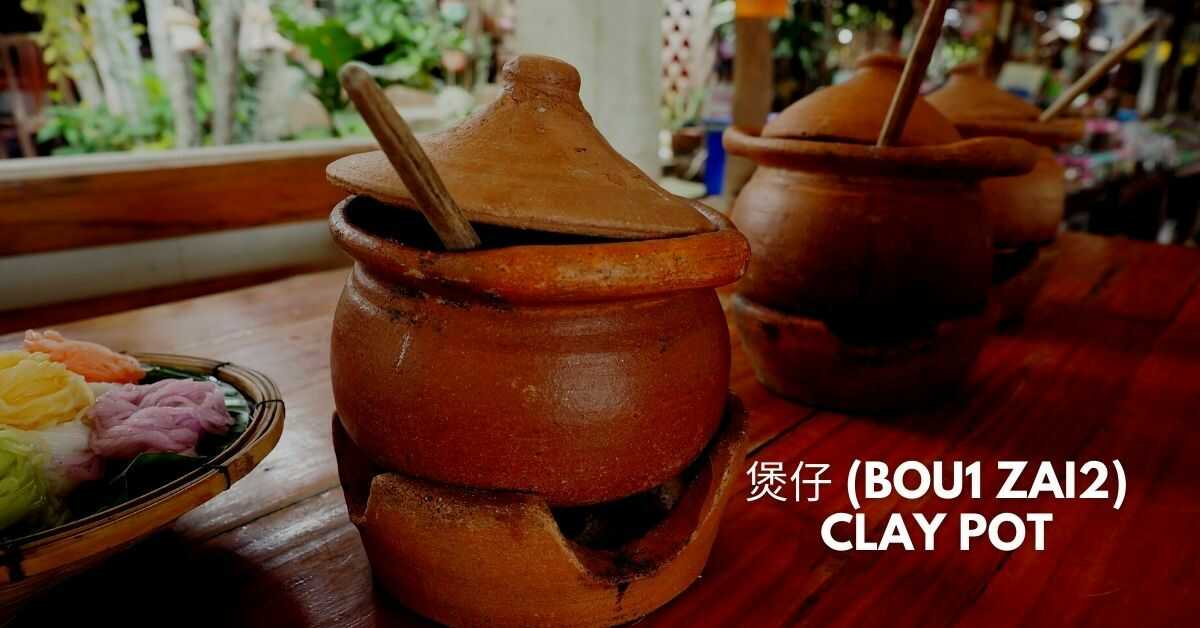
Another favorite cooking utensil in Cantonese that you need to learn is clay pot 煲仔 (Bou1 Zai2). East Asian countries widely use it. Clay pots are best used for soups and stews because they are made to hold heat and keep the food hot for a longer time than ordinary pots.
Clay pots have been used for generations. The alkaline nature of the clay generates a distinct flavor for the dishes cooked in them. The clay pot can be used in the oven or on the stove.
電爐 (Din6 Lou4) – Electric Stove

Of course, we cannot talk about cooking utensils in Cantonese without the electric stove. Hong Kong is one of the Asian Tigers, so it is no surprise that they use electric stoves instead of traditional cooking methods. By using an electric stove, cooking is faster. For restaurants, this is must-have equipment, especially during peak hours.
Other Chinese Cooking Utensils In Cantonese
Aside from the cooking utensils above, there are still many Chinese cooking tools in the Cantonese language that you should learn. Of course, not all the utensils are on this list but, this can be a good set of words to start if you’re learning about cooking utensils in Cantonese.
| Cantonese | Romanization | English Translation |
| 切肉刀 | cit3 juk6 dou1 | carving knife |
| 刀 | dou1 | knife |
| 金屬湯殼 | gam1 suk6 tong1 hok3 | metal ladle |
| 茶壺 | caa4 wu2 | teapot |
| 碗 | wun2 | bowl |
| 平底鑊 | ping4 dai2 wok6 | frying pan |
| 搓麵棍 | caai1 min6 gwan3 | rolling pin |
Eating Utensils
A Cantonese dining experience will not be complete without the different eating utensils. If you have been to an authentic Cantonese Chinese restaurant, you’ll see a porcelain soup spoon and plate with Chinese decorations or prints. It is one of the signatures of Cantonese culture. So, here are some eating utensils in Cantonese.
| Cantonese | Romanization | English Translation |
| 咖啡杯 | gaa3 fe1 bui1 | coffee mug |
| 咖啡壺 | gaa3 fe1 wu2 | coffee pot |
| 杯碟 | bui1 dip2 | cup and platter |
| 杯子 | bui1 zi2 | drinking glass |
| 叉 | caa1 | fork |
| 匙羹 | ci4 gang1 | spoon |
| 湯匙 | tong1 ci4 | soup spoon |
| 牛扒刀 | ngau4 paa2 dou1 | steak knife |
| 茶杯 | caa4 bui1 | teacup |
| 茶杯及碟子 | caa4 bui1 kap6 dip6 zi2 | teacup and saucer |
| 牙籤 | ngaa4 cim1 | toothpick |
| 木牙籤 | muk6 ngaa4 cim1 | wooden toothpick |
| 酒杯 | zau2 bui1 | wine glass |
| 瓶 | ping4 | pitcher |
| 微波爐 | mei4 bo1 lou4 | microwave |
| 雪櫃 | syut3 gwai6 | fridge |
Sentences Using Different Cooking Utensils In Cantonese
| Cantonese | Romanization | English Translation |
| 用 平 底 鑊 煎 蛋。 | jung6 ping4 dai2 wok6 zin1 daan2。 | Fry an egg in a pan. |
| 可以把刀遞給我嗎? | ho2 ji5 baa2 dou1 dai6 kap1 ngo5 maa3? | Could you pass me the knife? |
| 筷子正在碗上。 | faai3 zi2 zing3 zoi6 wun2 soeng6. | The chopsticks are on the bowl. |
| 將 所 有 蔬 菜 係 煲 入 面 撈 埋 一 齊。 | jeung1 so2 yau5 so1 choi3 hai6 bou1 yap6 min6 lou1 maai4 yat1 chai4。 | Mix all the vegetables together in the pot. |
Do You Want To Improve Your Cantonese Skills?
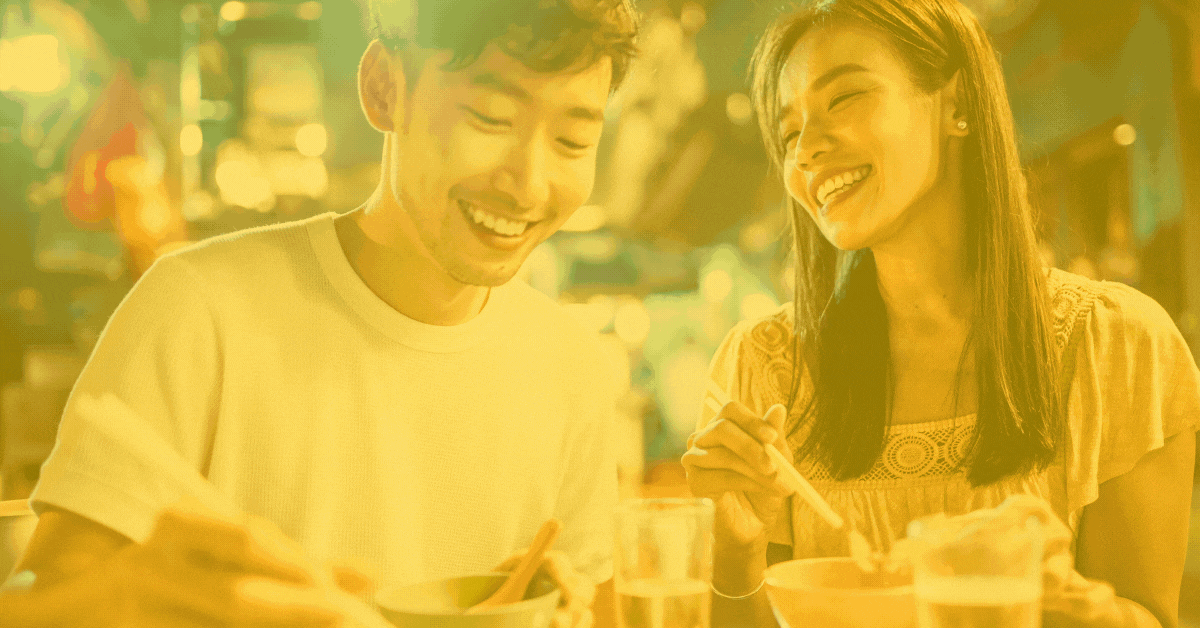
Are you dreaming of speaking Cantonese like a native speaker? Why don’t you turn your dream into reality using Ling App by Simya Solutions? With different tones, a wide range of vocabulary, and complex written characters, Cantonese can be challenging at first, but you’ll learn in a fun, gradual, but meaningful way if you do it with Ling App.
Start with a topic that you are familiar with. You can choose from a variety of different topics that suit your interest. Then learn this topic through a fun and engaging way using smart flashcards with mini-games, quizzes, audio recordings from native speakers, translations, romanizations, example sentences, and images. If you want to study grammar, there are grammar lessons available. After mastering vocabulary and grammar, you can use what you have learned through chatting with Chatbots.
Who says learning languages should be complicated? Learn Cantonese with Ling App now! Explore beyond your native language.
